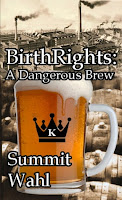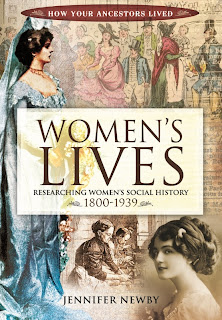I’m so excited to welcome my friend Victoria Hinshaw to Risky Regencies. (Here we are at the Lawrence Exhibit at Yale in 2011) Some of you know her only from the fabulous blog Number One London, but you should know that Vicky was a fabulous Regency author long before the blog began. Well, now Vicky is BACK and two of her Regencies are back, too, re-released as ebooks and available on Amazon, Barnes and Noble and Smashwords.

In The Fontainebleau Fan, Miss Meg Hayward paints trifles to sell, a way to avoid poverty. When her copy of an antique fan is sold as the real thing, she must find it and make amends. Nicholas Wadsworth, the Earl of Wakefield, believes he was swindled by the lovely young artist. How could he know that spending weeks with her at his estate would lead him from anger and humiliation to sympathy and affection?
“Ms. Hinshaw is to be highly complimented for a well-plotted, well-written book with well-drawn characters…a gentle, lively, humorous and very picturesque reading experience”–Rakehell review.

The Eligible Miss Elliott is Miss Rosalind Elliott, an heiress who despairs of finding a husband who is not primarily concerned with her fortune. She encounters her childhood friend Philip Caldwell and their friendship blossoms into romance. Rosalind is surprised and delighted to learn of Philip has become wealthy, although his wealth is unknown to the ton. When the vigorous Bath gossip-mill catches wind of the budding romance, they condemn Philip as just another fortune hunter who desires Rosalind’s property. Rosalind and Philip decide to outwit the busybodies and prevent scandal, dishonor, and humiliation. Will they be able to meet the challenge and be together without misgivings?
“Victoria Hinshaw has written an entertaining and gently insightful Regency romance”–Romance Reader review.
Vicky will give away a free download (Kindle or Nook) of each new ebook, one to two lucky commenters chosen at random.
Welcome, Vicky!
Lovers of Regency Romance will be pleased to know you are re-releasing The Fontainebleau Fan and The Eligible Miss Elliott as eBooks. When you prepared these books for ebook versions, did you make any changes to the stories?
Not a word. I reread them and had some ideas, but then I thought maybe I’d just write a whole new book! So, no revisions. The new ideas may appear someplace sometime.
Did you come across any interesting research when writing these books?
I researched various methods of wall painting in the Regency era for The Fontainebleau Fan. Rather than the ancient practice of fresco (painting in wet plaster, like Michelangelo), it seemed that stately homes were more likely to have the walls covered with canvas first, though some painted directly on the wall. Since the wall that Meg Hayward is going to paint at Wakefield Hall is in a new conservatory attached to the house, that wall would have once been an exterior wall. Even if plastered over, the wall should be covered with canvas for a longer lasting picture in a humid setting where flowers grew.
As you can tell, research is one of my favorite aspects of writing regency…need I say more?
Tell us how you first became interested in the Regency time period?
You mean beyond loving Jane Austen forever? And Georgette Heyer? The real impetus came from reading the regency-set novels by Laura London. I fell in love with the period, not to mention the writing. Laura London is the penname of a couple here in Milwaukee. Sharon and Tom Curtis wrote The Bad Baron’s Daughter, The Windflower, Moonlight Mist and several more. All are lovely stories, very nicely written.
Tell us about your involvement in the Jane Austen Society.
I have taught JA in several venues – on-line, in high school, for seniors, and for civic groups. My talks have been featured at a number of JASNA AGMs, the annual gathering of our tribe in various cities in the U.S. and Canada. I am a member of the local groups in Wisconsin and in Chicago, and enjoy as many of the meetings as I can. I learn lots of new information every time.
You blog at Number One London about an incredible diversity of topics. How do you and Kristine Hughes decide what to blog there?
Sometimes the subjects just pour out of us with no shortages. Our only sticking point is to find enough time to research and write. We cover our own activities – travel, talks, exhibits and so forth. And we present various excerpts from period works. Right now we are carrying selections from Dr. Syntax, originally published in 1812.
What is next for you?
 I have three active projects – a big surprise at Number One London, which we hope to start after the first of the year. I am writing another story set in 1840 and I have lots of regency ideas floating around. And I need to finish some of the genealogy I’ve started on my paternal lines from England. I have a GGGGrandfather who was with Wellington in the Peninsula and at Waterloo – actually a civilian mapmaker. My cousin and I saw a dozen of his intricately beautiful maps at the British Archives at Kew a few years ago, still carefully preserved.
I have three active projects – a big surprise at Number One London, which we hope to start after the first of the year. I am writing another story set in 1840 and I have lots of regency ideas floating around. And I need to finish some of the genealogy I’ve started on my paternal lines from England. I have a GGGGrandfather who was with Wellington in the Peninsula and at Waterloo – actually a civilian mapmaker. My cousin and I saw a dozen of his intricately beautiful maps at the British Archives at Kew a few years ago, still carefully preserved.
And I will be promoting the rest of my regencies as e-Books and another novel published originally in 1983 by Pocket Books. It is a family saga titled BirthRights: A Dangerous Brew, the story of three generations of a fictitious Milwaukee Brewing Dynasty from 1870-1930, available now as an e-book at Kindle, Nook, Smashwords, etc.
Thanks, Vicky, for being our Risky guest.
Now, readers, you can ask Vicky a question….or tell us if you used to read the traditional Regencies and what you think of their resurgence as ebooks. Remember, two lucky commenters will win a download of either The Fontainebleau Fan or The Eligible Miss Elliott.
 Regency History – the first entry I came across was one giving links to online copies of La Belle Assemble
Regency History – the first entry I came across was one giving links to online copies of La Belle Assemble











